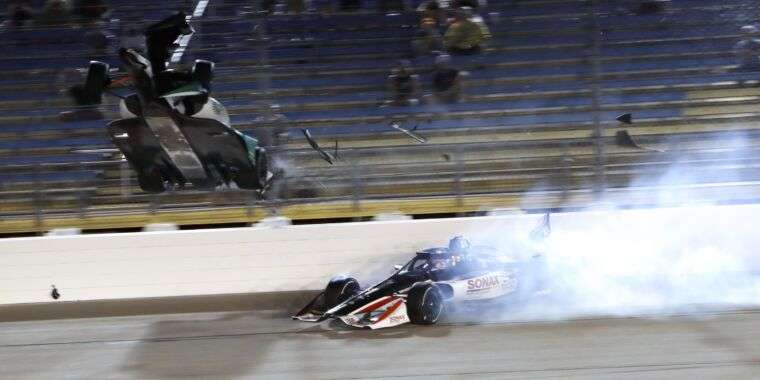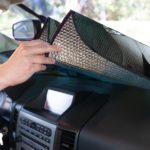
IndyCar’s Aeroscreen gets first real test, saves lives at Iowa race
The mix of ballistic polycarbonate and titanium is a big step in driver protection. …

reader comments
92 with 69 posters participating, including story author
-
Colton Herta (L) flies over the top of Rinus VeeKay (R) after a potentially nasty crash at Iowa Speedway.
-
An uncharacteristic mistake from the Penske pit crew left Will Power with a loose wheel. When it parted company with the rest of his vehicle, the car slid down the track, then back up to the wall. In the process, the wheel ran over the top of Power’s car but was deflected away from his head by the Aeroscreen.
-
Pole position went to Conor Daly, seen here getting into his car through the top of the Aeroscreen. The cooling hose fitted to his helmet is a new thing for 2020, because one downside to the Aeroscreen has been soaring cockpit temperatures.
The biggest change to IndyCar in 2020, other than a coronavirus-altered schedule, has been the addition of the new driver-protecting Aeroscreen to each of the race cars. On Friday night at Iowa Speedway, the Aeroscreen got its first real tests in a pair of potentially horrible crashes; happily, the new safety feature passed with flying colors.
The Aeroscreen was developed last year for IndyCar by Red Bull Advanced Technologies. The engineering consultancy of the championship-winning Formula 1 team originally proposed something similar for F1 in 2016, but that was rejected in favor of the Halo device—the bit that looks like a flip-flop strap—that we’ve seen on other open-wheel, open-cockpit race cars over the
Continue reading – Article source




